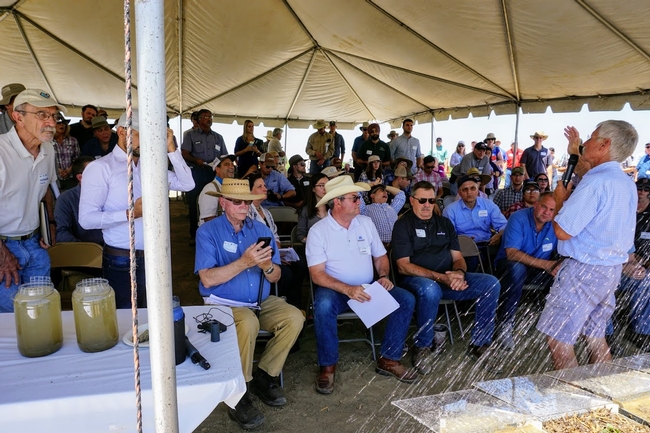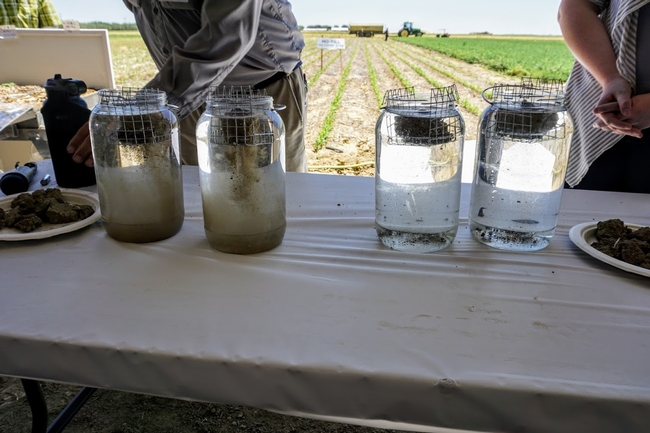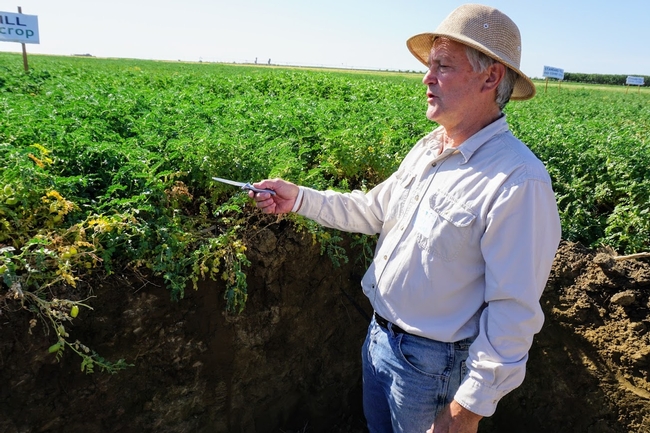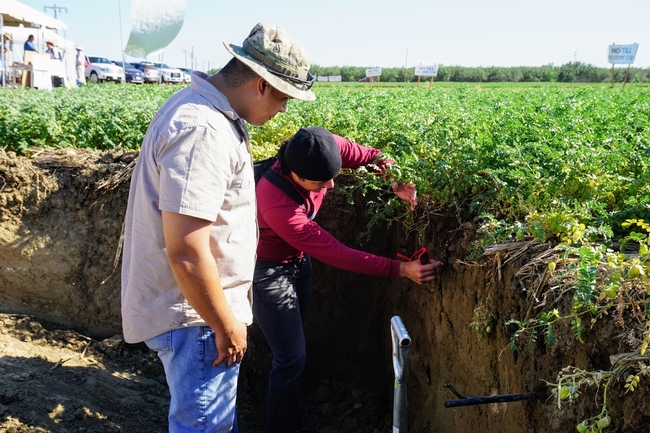Healthy soil does much more than hold plants upright on the surface of the earth. It is a mix of mineral bits and old plant particles teeming with microbes to form a mysterious and complex web of life scientists are just beginning to understand.
While scientists use high technology to study heathy soil – painstakingly counting soil worms and bugs, sequencing the DNA of soil bacteria, for example – some farmers know intuitively whether the soil is healthy just by walking on it.
Scott Park is a first-generation Meridian, Calif., farmer. “When I step on a field and it feels like a road, something is wrong,” he said. “If it feels like a marshmallow or sponge, that's good.”
Park shared his farming experiences with 200 farmers, industry representatives, University of California Cooperative Extension scientists, Fresno State students, news media and others during a half-day UC workshop at the UC West Side Research and Extension Center in Five Points.
“The last 31 years I've been on a mission of building soil,” Park said. “I discovered it by accident and I've made lots of mistakes. But yields trend upwards every year on every crop. Being sensitive to building soil, I'm making a lot of money. And if I'm doing something for the earth, all the better.”
Park said he adds 10 to 15 tons per acre of biomass to his farm every year. He's using less fertilizer, up to 20 percent less water, and even experimenting on the farm by growing a commercial crop with just four inputs: cover crops, water, seed and sun.
“We got high-yielding, good-quality crops,” Park said. “Nobody was more shocked than I am that I got a good crop.”
Researchers are now using the scientific method to figure out the root causes of these empirical observations.
“There's a lot going on in soil,” said Radomir Schmidt, a UC Davis soil microbiologist who spoke at the soil health field day.
A teaspoon of soil has a billion bacteria and six miles of fungal hyphae, the filaments that branch out through the soil from fungi, Schmidt said. The microbes' interaction with living plant roots, the larger pores left by decomposing vegetation and tunneling worms and insects create a system that confers resilience to unforeseen challenges – such as pest pressure, torrential rainfall and plant diseases.
The field day was held under a tent pitched adjacent to an 18-year research trial at the 320-acre facility. The trial compares four farming systems side by side:
- Conventional system, with annual soil tillage and no cover crops.
- Conservation agriculture, with no tilling whatsoever and annual winter cover crops.
- No-till without the cover crop.
- Conventional tilling with a cover crop.
“Take a look over my shoulder to see the difference,” said Jeff Mitchell, UC Cooperative Extension specialist and the study leader. “We've found the cover crops and no-till reduce water needs, cut dust, and lower costs. And there may be more benefits than we realized.”
For example, a graduate student counted the worms, bugs, beetles and other microfauna in soil samples from each of the treatments. There were double the amount in the no-till, cover crop plots compared to the conventional farming system.
UC Cooperative Extension specialist Sloan Rice found that cover crops promote water retention in the soil after rainfall. There is very little water evaporation from the soil surface and water transportation from the cover crop plants in the winter, so little water is lost. Cover crops also promote more water infiltration below three feet.
Healthy soil management also shows promise in confronting global climate change by sequestering carbon in the soil, rather than depleting it.
Manager of Sano Farms in Firebaugh, Jesse Sanchez, was a speaker at the field day. He wasn't surprised by the overflow crowd.
“Farmers are more and more curious. They see some of us using cover crops, and they want to learn more,” Sanchez said. “There has been a swell of interest. I have a tremendous number of visitors every year.”
For more information about soil building, see the UC Conservation Agriculture Systems Innovation website at http://casi.ucanr.edu.



